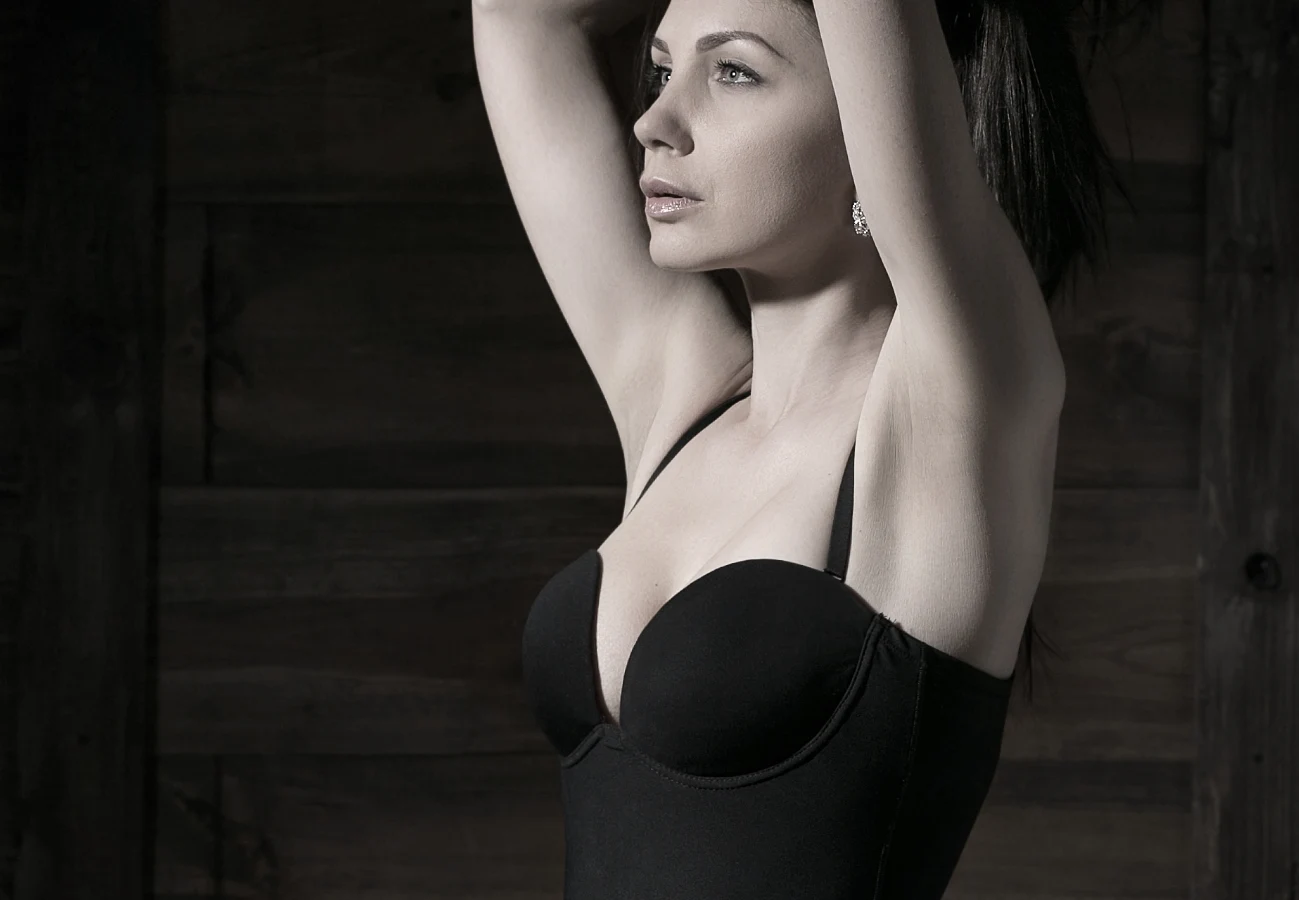Breast Reduction
Living with disproportionately large breasts can cause daily neck, back, and shoulder pain, skin irritation, and wardrobe challenges that chip away at self‑confidence. Breast reduction surgery can be a life-changing procedure for women with large breasts, relieving physical discomfort, improving quality of life, and boosting self-esteem.
Houston board-certified plastic surgeon Dr. Berry Fairchild is experienced in breast surgery and dedicated to helping women feel comfortable and confident in their bodies. She works closely with her patients to ensure they feel empowered in every step of their personalized treatment plan.
Explore Breast Reduction Options
- What Is Breast Reduction Surgery?
- Types of Breast Reduction Procedures
- Benefits of Breast Reduction Surgery
- Who Is a Good Candidate for Breast Reshaping Surgery?
- What to Expect During Your Breast Surgical Procedure
- Why Choose Dr. Fairchild for Breast Reduction?
- Frequently Asked Questions About Breast Reduction Surgery
- Schedule a Consultation
What Is Breast Reduction Surgery?
Breast reduction, also called reduction mammoplasty, surgically removes excess breast fat, glandular tissue, and skin to achieve a breast size in proportion with your body and to alleviate discomfort. The operation simultaneously lifts the breast, repositions the nipple‑areola complex, and refines the shape for a youthful, balanced silhouette.
Common reasons women choose breast reduction include:
- Chronic back, neck, or shoulder pain
- Nerve compression or numbness in the arms or hands
- Skin rashes beneath the breast folds
- Postural problems and bra‑strap grooves
- Activity limitations or difficulty finding properly fitting clothing
Types of Breast Reduction Procedures
Dr. Fairchild offers several incision patterns and breast reduction techniques to match your anatomy and aesthetic goals. The right one for you will depend on your breast size, skin quality, desired volume reduction, and future breastfeeding plans.
Anchor (Inverted‑T) Incision
The most common technique, this approach involves making an anchor shape around the areola, continuing vertically down to the breast crease, and extending horizontally along the fold. It is ideal for significant size reduction and those who have substantial skin excess.
Vertical (Lollipop) Incision
Best suited for moderate reductions and patients with good skin elasticity, this approach involves making a circular incision around the areola with a vertical line to the crease, leaving no horizontal scar.
Liposuction‑Assisted Reduction
Patients may also choose to add liposuction to their breast reduction surgery to improve aesthetic results. In these cases, Dr. Fairchild may use liposuction to remove excess fat and contour the area around the breasts.

Benefits of a Breast Reduction
- Relief from physical discomfort: Large breasts can cause significant physical discomfort, including neck pain, back pain, skin irritation, and bra strap grooving. Breast reduction surgery can alleviate these symptoms by reducing the weight and size of the breasts.
- Improved quality of life: Women with large breasts may experience difficulties with physical activities, such as exercise and sports, and may feel self-conscious about their appearance. Breast reduction surgery can improve quality of life by enhancing physical abilities and boosting self-confidence.
- Better posture: Women with large, heavy breasts often suffer from poor posture, which can cause additional strain on the back, neck, and shoulders. Breast reduction surgery can improve posture and reduce the risk of chronic pain.
- More proportional figure: Women with breasts that are overly large may feel that their figure is unbalanced, and their breasts can overwhelm their frame. Breast reduction surgery can create a more proportional figure by reducing the size of the breasts to match the body.
- Wider variety of clothing options: Women with large breasts may have difficulty finding clothes that fit well and feel comfortable. Breast reduction surgery can make finding clothes that fit and flatter the body easier.
- Improved self-esteem and body image: Many women with large breasts feel self-conscious and unhappy with their appearance. Breast reduction surgery can improve self-esteem and body image by creating a more proportionate and balanced figure.

Who is a Good Candidate for Breast Reshaping Surgery?
You may be an excellent candidate for breast reduction if you:
- Experience physical symptoms such as pain, rashes, or activity restrictions linked to breast size.
- Feel self‑conscious about breasts that are out of proportion to your frame.
- Are in good general health, close to a stable weight, and a non‑smoker (or willing to quit).
- Have realistic expectations and understand that visible scars are a trade‑off for relief.
What to Expect During Your Breast Surgical Procedure
Consultation
If you are considering plastic surgery to reduce your breast size, the first step is a consultation with Dr. Fairchild. In addition to examining your breasts, she will review your medical history, discuss your concerns and goals, and answer any questions you have. If you and Dr. Fairchild decide together that breast reduction surgery is right for you, she will create a treatment plan that is tailored to your needs. She will also advise you on any pre-surgical guidelines.
The Procedure
Breast reduction surgery is usually an outpatient procedure performed under general anesthesia and takes about four hours to complete. During the procedure, Dr. Fairchild will make incisions in the breasts, removing excess tissue, fat, and skin. She will then reshape the breast tissue to create a smaller, firmer breast. The nipple and areola are typically repositioned to a higher location on the breast. The incisions are then closed with sutures, and a surgical bra or bandage is applied to the breasts to help support and protect them during the healing process.
Recovery and Aftercare
After the surgery, patients can expect to experience some discomfort and swelling, which can be managed with pain medication and rest. Most patients are able to return to work and normal activities within a week or two, but strenuous activity and heavy lifting should be avoided for several weeks. Dr. Fairchild will recommend compression garments to reduce swelling and aid in healing, and she will schedule follow-up appointments to monitor your recovery and results.
Breast reduction surgery does more than just change breast size. Dr. Fairchild will also take care to improve the shape, projection, and symmetry of your breasts. You can expect a perkier, more youthful, and more proportionate bust.
Why Choose Dr. Fairchild for Breast Reduction?
- Board‑Certified Expertise: Certified by the American Board of Plastic Surgery, Dr. Fairchild combines advanced surgical skill with an artist’s eye for proportion.
- Patient‑First Philosophy: She believes collaborative planning and transparent communication lead to the most satisfying outcomes.
- Comprehensive Breast Care: From reduction to reconstruction and cosmetic refinement, Dr. Fairchild offers a full spectrum of breast procedures for cohesive results across life stages.

Frequently Asked Questions About Breast Reduction Surgery
Is breast reduction surgery covered by insurance?
Health insurance companies may offer coverage for breast reduction surgery, but approval depends on many factors. Many patients wonder what size breasts qualify for reduction. Still, each insurance plan has its own criteria, so it is important to communicate with your insurance company to determine your coverage.
How painful is breast reduction recovery?
Discomfort is moderate for most patients and well managed with oral medication for the first few days. By the end of week 1, many people transition to over‑the‑counter pain relievers. A supportive surgical bra and limited arm movement also ease soreness.
Will I be able to breastfeed after breast reduction?
Breast reduction surgery can affect the ability to breastfeed in the future, but the extent of the effect varies from person to person. It’s important to discuss your breastfeeding goals with Dr. Fairchild before the surgery to determine the best approach for your individual situation.
When can I return to work or exercise?
Most non‑physical jobs are safe after 7‑10 days. Light cardio can begin around week 3; strenuous upper‑body workouts and heavy lifting wait until week 6 or when cleared at follow‑up.
Schedule a Consultation with Our Board-Certified Houston Surgeon
Ready to relieve pain, regain confidence, and enjoy a more balanced figure? Request your one‑on‑one consultation with Dr. Berry Fairchild today.